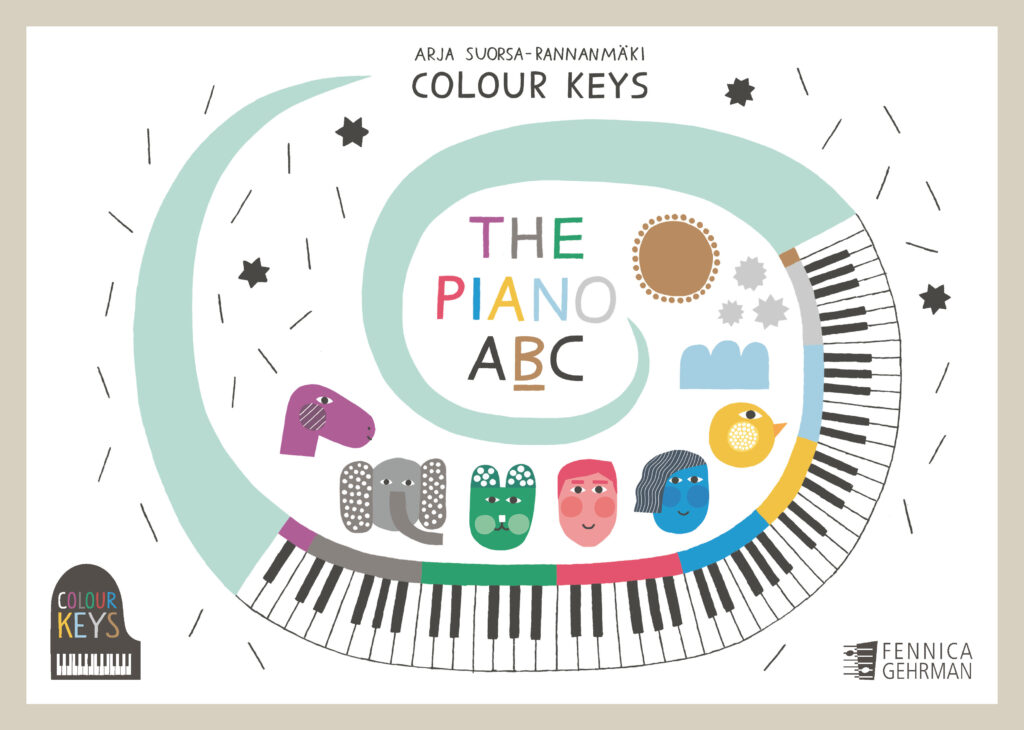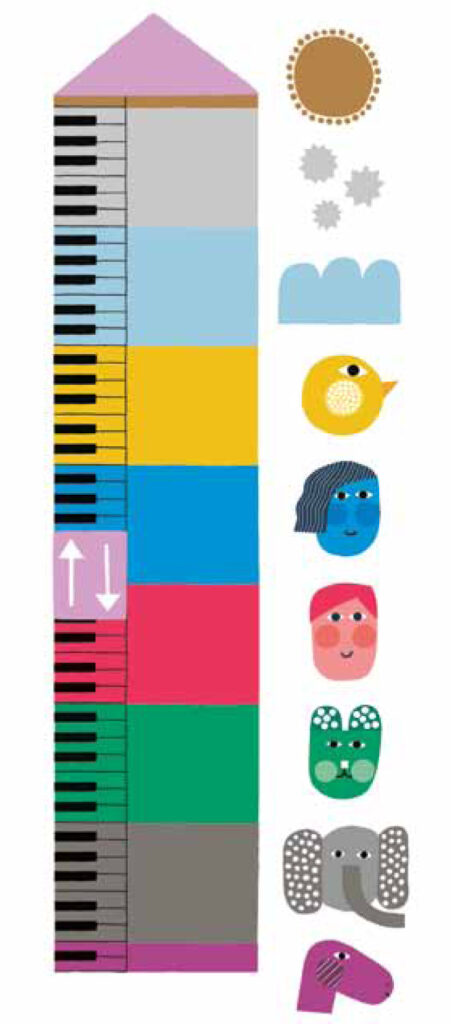Inspired by the Colourstrings method the Colour Keys by Arja Suorsa-Rannanmäki is an inspiring tutor designed for small beginners. The book applies the ideas of Kodály in emphasizing the inner hearing skills through audio-visual means.
New ideas are offered gradually, e.g. the coloured staff is constructed from a single-line staff to a five-line staff. A Little DO wandering on the keyboard suggests transposition. The book includes supporting material, e.g. a coloured slip to be placed behind the keys. The pieces in this book are a collection of folk songs and children’s songs from different countries.
The Piano ABC books are available in our web shop.
There are also separate Teacher’s guides for both books in English and in Finnish. They offer pedagogical information and illustrate the story of Little DO’s trip to the Musicland.
The guides also include lyrics to the songs.
See sample pages of Book A
See sample pages of Book B
More about the books
The Colour Keys piano ABC is designed for young beginners and it can be used on its own or together with other beginner piano repertoire. It is well suited for both private and group lessons. In these beginner books the different musical concepts are introduced in the simplest manner possible. New ideas are offered and studied gradually. The octave ranges of the keyboard are illustrated with individual colours and different characters from Musicland serve as symbols for each octave. The coloured staff is constructed gradually from a single-line staff into a five-line staff. The rhythm and solfa names as well as the hand signs, which are used in relative solfa, help a student absorb new musical notation material. Transposing pieces regularly will make moving around on the keyboard as well as playing in different keys feel natural. The characteristic sound of each octave range becomes familiar when a student also plays at the opposite ends of the keyboard. The pieces in this book are folk songs and children’s songs from different countries. Learning is designed to progress from concrete to abstract.
Additional materials include a coloured slip that is placed behind the keys to help identify the different octave ranges, a transparent and movable transposing slip that is placed on top of the coloured slip and works in all keys, as well as transforming slips that can be used to vary the pieces.
Pictures of road signs and a suitcase function as symbols for transposition. A Little DO wandering on the keyboard along with his suitcase and keys also suggests transposition. A colour lift encourages a student to play the pieces in different octaves.
About the author

Arja Suorsa-Rannanmäki studied with Margherita Tandefelt and Matti Raekallio at the Sibelius Academy and graduated with a piano diploma in 1982. She complemented her studies with István Lantos at the Liszt Academy in Budapest in several study periods during 1982–1988. She has performed as a chamber musician and a lied pianist in Finland and Hungary and recorded solo piano works of Ahti Sonninen. She has taught piano at the East Helsinki Music Institute.
The first edition of her Colour Keys piano method book was published in 1986. Since then Suorsa-Rannanmäki has presented numerous lectures on the method across Europe. She participated in the EU project that produced the Colour Keys Flexible Ensemble repertoire for young pianists. During 1988–2001 she was a faculty member at the Sibelius Academy teaching piano pedagogy. As a post-graduate student in the Development Study Programme at the Sibelius Academy she further developed the Colour Keys method and created new teaching material.



